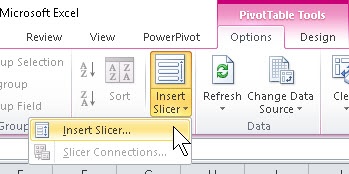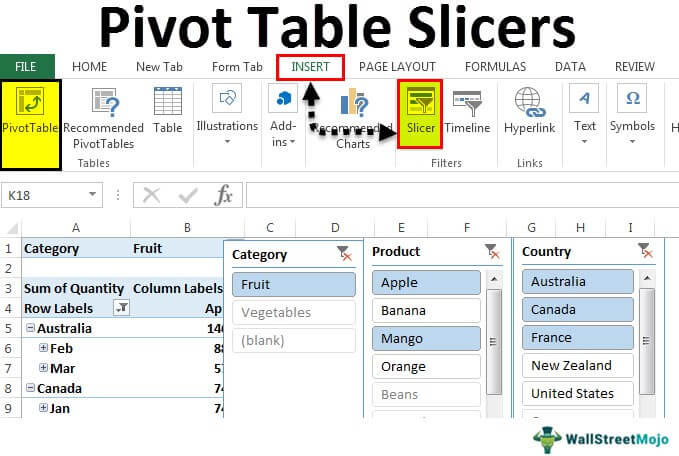


Select the data range A1:A13 and G1:G13 (Hold down the control key to make your selection).ġ9. Copy the formula down to G17 (the values for Sales or the selected cost center will be copied down).ġ7. The column number is returned by the value in $D$17(1).ġ6.There is no row number hence returning, , (two commas).The INDEX function returns the value in a table at the intersection of a given row and column number.Press the F4 key to make this cell absolute. Note: The reference for D17 should be typed in not selected. Select cell G1 and enter the following formula: Right click your Slicer and select Slicer Settings.ġ5. From Pivot Table Tools, select Options.ġ1. Place the Cost Center to the rows area.ĥ. Add the Pivot Table to the existing worksheet in cell C16 and select OKĤ. Select the Insert tab then Pivot Table.ģ. Select any cell within the Cost Centre table.Ģ. We start by inserting a Pivot Table using the cost centers.ġ.
#Excel how to add slicer to filter by time download#
Note: Download the sample workbook to practice this exercise Commonly, slicers are applied only to data that is presented in Tables, Pivot Tables and Pivot Charts – not non Pivot data, but there is a way around that, which is what we will show you in this tip. Sometimes you may want to present your data simply as a range, but would like to make use of Slicers (available in Microsoft® Excel® 20) to be able to quickly filter data.


 0 kommentar(er)
0 kommentar(er)
